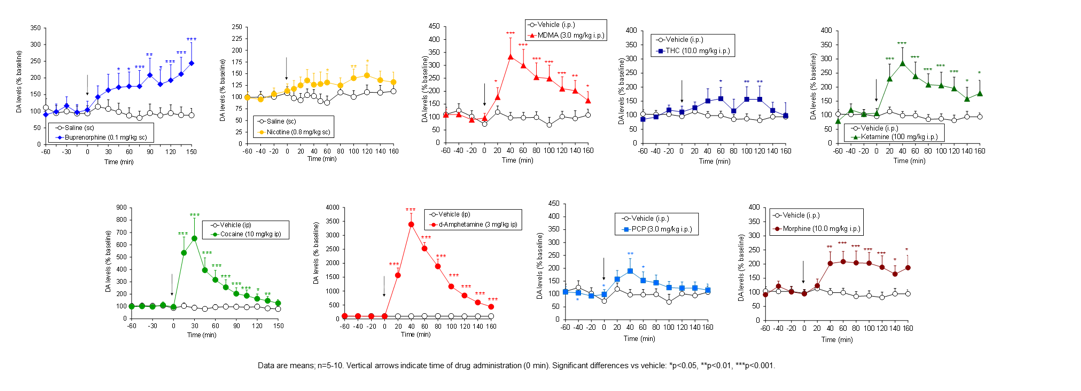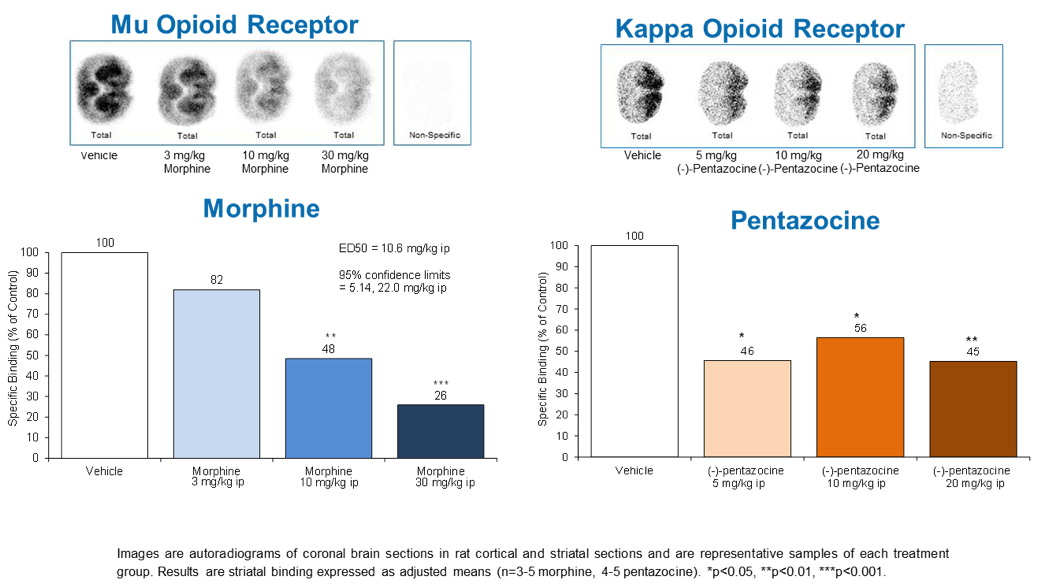Early Assessment of Abuse Potential
Sygnature provides a variety of models to compare the pharmacological profiles of novel drugs with known drugs of abuse. These models enable the early assessment of abuse potential.
Locomotor activity
All drugs of abuse will either increase or decrease locomotor activity in rodents. While this assessment is vulnerable to false positives (i.e. many drugs which affect locomotor activity are not abused) a negative finding in this model can provide reassurance that a drug does not possess abuse potential.
In-vivo microdialysis
In-vivo microdialysis can be used to show the effect of drugs of abuse on extracellular dopamine levels in the rat nucleus accumbens. Many drugs of abuse share this effect, providing a useful and cost-effective screening tool for the early assessment of abuse potential.

Ex-vivo receptor binding
Ex vivo binding can be used to determine occupancy of the test drug at abuse-related receptors, binding sites and transporters in the brain.
- Our receptor binding services include off-the-shelf assays for well-characterised neurotransmitter receptors and uptake sites using commercially available [3H] radioligands
- We use high speed quantitative autoradiography using the Biospace BetaIMAGERTM system
- The data shown here demonstrate Mu and Kappa opioid receptor occupancy for morphine and pentazocine, respectively

